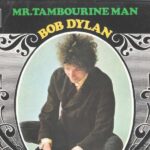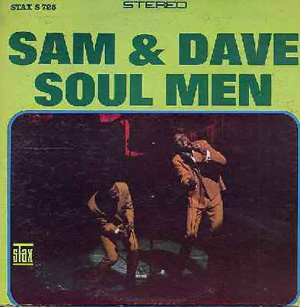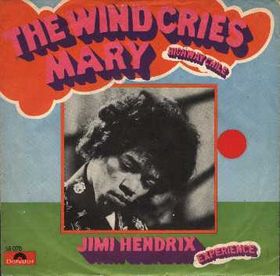 Few songs in the history of modern music have carried the weight, mystique, and lyrical brilliance of Bob Dylan’s “Mr. Tambourine Man.” Released in 1965 on the album Bringing It All Back Home, the track represents a pivotal moment in Dylan’s career, signaling his shift from straightforward protest folk to a more surreal, poetic, and introspective style that would redefine what popular music could be. From the opening chord to the final strum of the 12-string guitar, “Mr. Tambourine Man” is both an invitation and a challenge—a call to leave the mundane behind and step into a world of imagination, reflection, and musical innovation. Dylan’s lyrics, steeped in metaphor and literary richness, combined with his unconventional vocal phrasing and the song’s hypnotic folk-rock arrangement, create a work that transcends time, resonating with generations of listeners and influencing countless artists across genres.
Few songs in the history of modern music have carried the weight, mystique, and lyrical brilliance of Bob Dylan’s “Mr. Tambourine Man.” Released in 1965 on the album Bringing It All Back Home, the track represents a pivotal moment in Dylan’s career, signaling his shift from straightforward protest folk to a more surreal, poetic, and introspective style that would redefine what popular music could be. From the opening chord to the final strum of the 12-string guitar, “Mr. Tambourine Man” is both an invitation and a challenge—a call to leave the mundane behind and step into a world of imagination, reflection, and musical innovation. Dylan’s lyrics, steeped in metaphor and literary richness, combined with his unconventional vocal phrasing and the song’s hypnotic folk-rock arrangement, create a work that transcends time, resonating with generations of listeners and influencing countless artists across genres.
At the heart of “Mr. Tambourine Man” is its enigmatic narrator, a figure who beckons the listener toward transcendence, freedom, and self-discovery. The tambourine man himself is never fully explained, and that ambiguity is central to the song’s allure. Is he a symbol of artistic inspiration, a psychedelic guide, or simply a reflection of longing for escape from the burdens of everyday life? Dylan’s genius lies in his refusal to provide a concrete answer. Instead, he layers the song with vivid, almost dreamlike imagery: “Take me on a trip upon your magic swirling ship / My senses have been stripped, my hands can’t feel to grip.” These lines convey a simultaneous yearning for liberation and a surrender to forces beyond control. The language is rich with synesthetic qualities, blending sensory experiences in ways that evoke the disorienting yet exhilarating sensations of artistic and personal awakening.
Musically, the original 1965 recording of “Mr. Tambourine Man” features Dylan’s acoustic guitar and harmonica, accompanied by a sparse but effective rhythm that allows the lyrics to dominate while still maintaining a compelling melodic structure. The song’s 2/4 meter provides a lilting, cyclical motion, mirroring the repetitive yet meditative nature of the tambourine man’s call. Dylan’s vocal delivery, alternately plaintive and assertive, adds emotional complexity. He bends phrases, elongates syllables, and occasionally employs unconventional intonation, imbuing the song with a sense of spontaneity and authenticity. The minimalism of the arrangement underscores the song’s poetic qualities, highlighting the interplay between words, rhythm, and melody in a way that feels intimate, immediate, and timeless.
“Mr. Tambourine Man” is also notable for its structural sophistication. Unlike the conventional verse-chorus-verse patterns dominating popular music at the time, Dylan constructs the song as a series of stanzas that flow seamlessly into one another, each developing imagery and narrative in an almost cinematic fashion. The absence of a traditional chorus allows the listener to become immersed in the unfolding journey rather than anticipating repetitive hooks. This approach reflects Dylan’s broader artistic philosophy, wherein songs serve as vessels for ideas, emotions, and reflections rather than simple vehicles for commercial appeal. The effect is hypnotic, drawing listeners into a world where the boundaries between reality and imagination blur, and where meaning is as much felt as it is understood.
The song’s lyrics are densely packed with literary references, cultural touchstones, and symbolic motifs, many of which have been analyzed extensively by scholars and fans alike. The tambourine man himself can be interpreted as a muse, a figure of spiritual or artistic inspiration, or even as a representation of the countercultural ethos emerging in the mid-1960s. Lines such as “Though I know that evening’s empire has returned into sand / Vanished from my hand” evoke impermanence, loss, and the fleeting nature of experience, connecting the personal to the universal in a way that resonates across contexts. Dylan’s imagery is simultaneously specific and abstract, creating a kaleidoscopic effect where meaning shifts with each listening. The song encourages introspection, inviting listeners to reflect on their desires, fears, and aspirations while engaging with a larger, more expansive world of thought and emotion.
The 1965 release of “Mr. Tambourine Man” coincided with a period of experimentation and transformation in Dylan’s career. Having already gained fame as a protest singer with songs like “Blowin’ in the Wind” and “The Times They Are a-Changin’,” Dylan was now exploring a more personal, poetic, and surrealistic approach. “Mr. Tambourine Man” marked a turning point, signaling a willingness to depart from topical, issue-driven songwriting in favor of introspective, symbolically rich storytelling. This shift was initially controversial among some fans who preferred his earlier, more politically engaged material, but it ultimately expanded the possibilities of what folk and popular music could accomplish. The song became a bridge between Dylan’s folk roots and the emerging folk-rock movement, influencing both contemporaries and the next generation of singer-songwriters.
Perhaps one of the most famous renditions of the song is the 1965 cover by The Byrds, which transformed Dylan’s acoustic folk composition into an electrified folk-rock anthem. Featuring jangly 12-string guitar, tight harmonies, and a more pronounced rhythm section, The Byrds’ version brought the song to a mainstream pop audience, reaching number one on the Billboard charts. While Dylan’s original is introspective, haunting, and meditative, The Byrds’ interpretation emphasized accessibility, rhythm, and melodic clarity, illustrating the song’s versatility and universal appeal. The coexistence of these two iconic versions demonstrates the adaptability of Dylan’s composition and its ability to resonate across different musical contexts while maintaining its poetic integrity.
“Mr. Tambourine Man” also serves as a commentary on the transformative power of art and imagination. The tambourine man is both literal and metaphorical, a guide leading the listener away from mundane routines into a world of creativity, wonder, and self-exploration. In this sense, the song reflects Dylan’s broader philosophy of music as a tool for awakening, reflection, and personal growth. The song’s enduring relevance is partly due to this universality: regardless of era or cultural context, listeners can find personal meaning in the imagery, metaphor, and emotional resonance of the lyrics. The song becomes not just a listening experience but a participatory journey, inviting the imagination to take flight.
Dylan’s vocal performance on “Mr. Tambourine Man” exemplifies his ability to infuse technical imperfection with emotional truth. His voice, sometimes wavering, sometimes deliberate, carries a sense of urgency and intimacy that draws listeners closer to the narrative. The nasal timbre, combined with his phrasing and phrasing shifts, creates a tension between immediacy and reflection, spontaneity and deliberation. This vocal approach aligns with the song’s thematic content, suggesting the fragility of human experience, the fluidity of perception, and the complex interplay between reality and imagination. It is this human quality—vulnerability, curiosity, and sincerity—that elevates the song beyond mere composition into an enduring work of art.
The instrumentation, though minimal, contributes significantly to the song’s hypnotic quality. The 12-string guitar, with its shimmering resonance, creates a sense of expansiveness, echoing the open, limitless landscapes depicted in the lyrics. Dylan’s harmonica interludes punctuate the verses, adding a plaintive, wandering quality that reinforces the song’s sense of journey and exploration. Each note, strum, and breath feels intentional, a deliberate step in guiding the listener through the song’s narrative and emotional landscape. This careful balance between musical simplicity and lyrical complexity is a hallmark of Dylan’s songwriting, allowing the song to remain approachable while offering layers of meaning for those who seek them.
Culturally, “Mr. Tambourine Man” embodies the spirit of the 1960s, a period characterized by social upheaval, artistic experimentation, and a burgeoning countercultural consciousness. The song’s surrealistic imagery, lyrical ambiguity, and exploration of consciousness reflected the era’s fascination with new modes of perception, altered states, and the transformative potential of art and music. Dylan’s work resonates with the ethos of the time, capturing both the longing for personal liberation and the desire to transcend conventional societal boundaries. In this context, “Mr. Tambourine Man” becomes not only a musical milestone but also a historical artifact, a sonic reflection of the era’s ideals, anxieties, and aspirations.
The song’s enduring influence can be seen in its impact on subsequent generations of musicians and songwriters. From folk-rock artists to alternative and indie musicians, countless performers have drawn inspiration from Dylan’s lyrical ingenuity, melodic sophistication, and willingness to explore uncharted thematic and musical territories. “Mr. Tambourine Man” serves as a benchmark for lyrical and artistic ambition, demonstrating that popular music can be both commercially viable and intellectually profound. Its combination of emotional resonance, poetic depth, and melodic accessibility ensures its place in the canon of modern music, inspiring musicians and listeners alike to push the boundaries of creativity and expression.
Even decades after its release, “Mr. Tambourine Man” retains a sense of immediacy and relevance. Its themes of longing, exploration, and transformation continue to resonate with listeners of all ages, while its musical innovations remain instructive for aspiring songwriters and performers. The song’s capacity to evoke emotion, stimulate imagination, and provoke reflection exemplifies the enduring power of music as an art form. Its lasting appeal lies not only in its melody or instrumentation but in the rich, multilayered interplay of lyrics, voice, and atmosphere that Dylan crafted with such care and insight.
In conclusion, Bob Dylan’s “Mr. Tambourine Man” is a timeless masterpiece that embodies the essence of poetic, transformative, and innovative songwriting. Its blend of enigmatic lyrics, hypnotic melody, and understated instrumentation creates a work that is simultaneously personal, universal, and transcendent. The song’s exploration of imagination, freedom, and self-discovery resonates across generations, while its musical craftsmanship continues to influence artists and captivate listeners. Whether experienced in its original acoustic form or through one of its many reinterpretations, “Mr. Tambourine Man” remains a testament to Dylan’s genius, a landmark in the evolution of popular music, and an enduring invitation to journey beyond the ordinary into the extraordinary.
Track Highlights:
-
Iconic opening 12-string guitar riff and harmonica interludes
-
Enigmatic lyrics exploring imagination, freedom, and transcendence
-
Dylan’s distinctive vocal delivery, blending vulnerability and authority
-
Structural innovation with continuous stanzas rather than conventional chorus
-
Cultural impact as a cornerstone of folk-rock and 1960s counterculture
“Mr. Tambourine Man” endures as one of Bob Dylan’s most celebrated compositions, a song that challenges, inspires, and captivates, confirming his place as a masterful architect of modern music and poetic expression.


